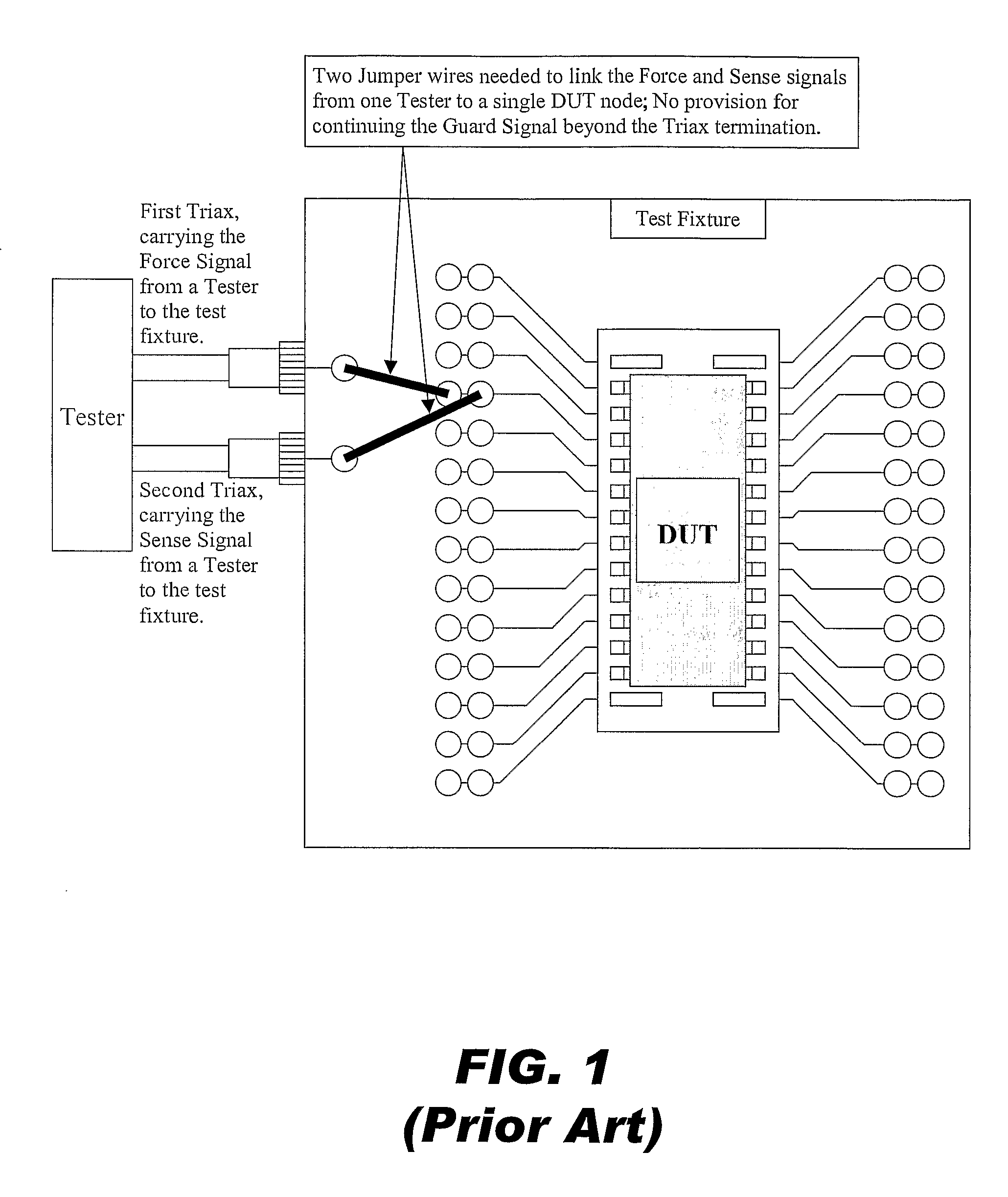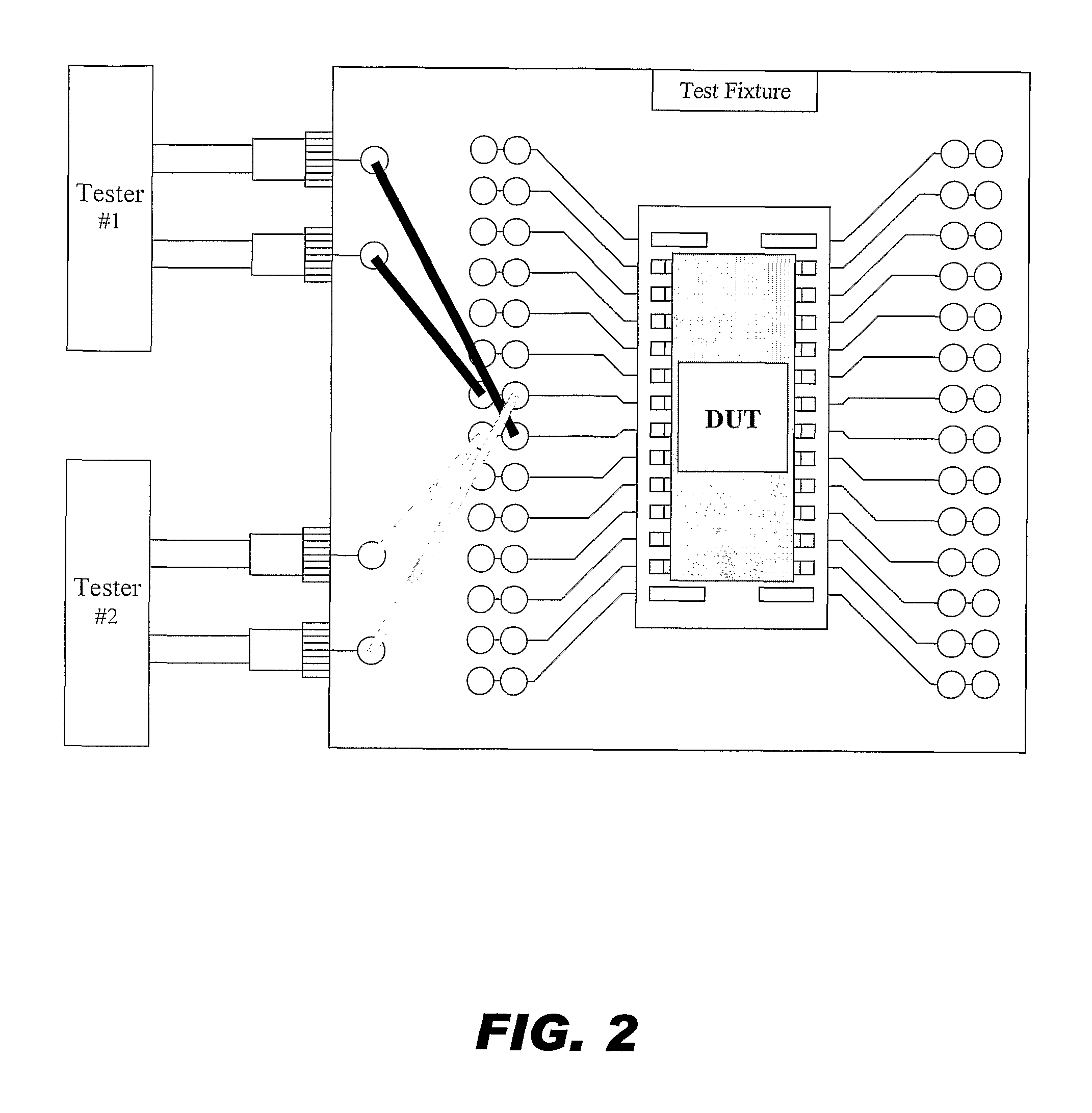Electrical connector for semiconductor device test fixture and test assembly
a technology of electrical connectors and test fixtures, which is applied in the direction of connection contact members, coupling device connections, instruments, etc., can solve the problems of non-negligible ohmic voltage drop of connecting wires, complex wiring, and inability to meet the requirements of the device,
- Summary
- Abstract
- Description
- Claims
- Application Information
AI Technical Summary
Problems solved by technology
Method used
Image
Examples
Embodiment Construction
[0011] The first element in the current invention (FIG. 3) is the use of miniature cables that can carry at least the three critical signals, namely the Force, Sense, and Guard signals, in one cable instead of the two bulky Triax cables. The specific cables chosen by us are mini-USB cables, very common in computer related applications. These flexible, relatively cheap, readily available and physically small cables possess excellent insulation characteristics. Each cable contains five inner wires, all surrounded by a metallic enclosure. The five inner-wires are used as follows: One wire for Sense, one wire for Guard and the remaining three wires for Force. Note that three wires are allocated for the force signal to maximize its current carrying capability; however, any combination which assures at least one dedicated wire to each of the three functions (namely, Force, Sense, Guard) is applicable and should be considered an integral part of this invention. Another related provision ad...
PUM
 Login to View More
Login to View More Abstract
Description
Claims
Application Information
 Login to View More
Login to View More - R&D Engineer
- R&D Manager
- IP Professional
- Industry Leading Data Capabilities
- Powerful AI technology
- Patent DNA Extraction
Browse by: Latest US Patents, China's latest patents, Technical Efficacy Thesaurus, Application Domain, Technology Topic, Popular Technical Reports.
© 2024 PatSnap. All rights reserved.Legal|Privacy policy|Modern Slavery Act Transparency Statement|Sitemap|About US| Contact US: help@patsnap.com










